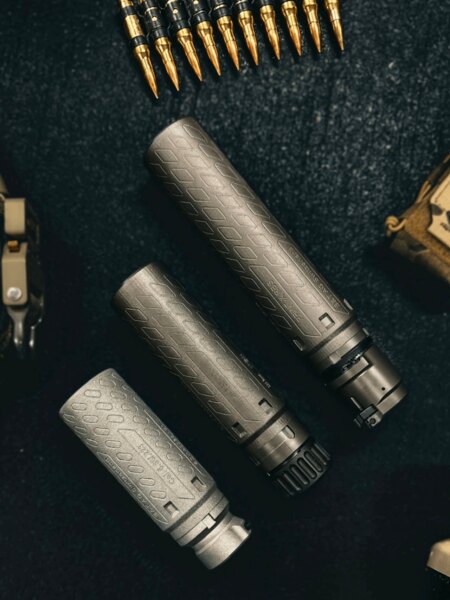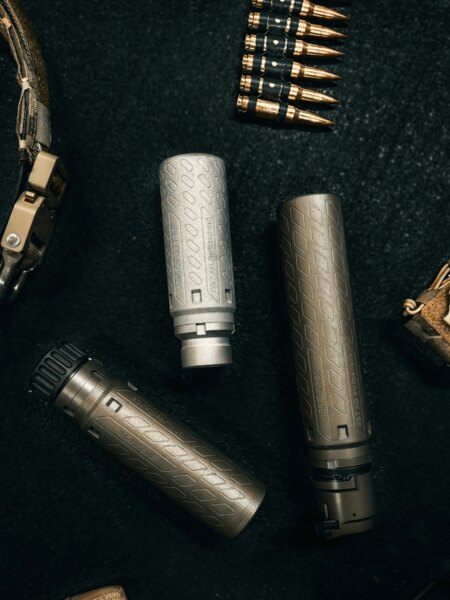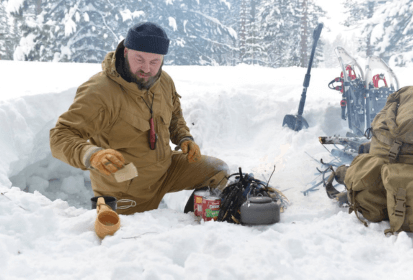Competitive shooters
Lower noise, reduced felt recoil, and the ability to train longer without excessive fatigue.
Suppressors are long past being exclusive tactical equipment for special forces. Increasingly, shooters are using them in sport shooting, hunting, and on the range. A suppressor protects hearing, reduces felt recoil, and makes shooting more comfortable. Here we explain why you should consider one, what benefits they actually deliver, and how to pick the right model.
Over time suppressors have shifted from niche kit to standard shooter gear. Their advantages are broad and practical — from better long-term hearing protection and improved weapon controllability to a more pleasant shooting experience overall. Whereas suppressors used to be closely associated with the military and intelligence services, today they’re commonly adopted by competitive shooters at training sessions, hunters in the field, and everyday range users.
Different user groups value different things: some prioritize lower noise and less shooter fatigue, others want a more discreet report or the tactical benefits in confined or low-visibility scenarios. The common denominator is that a suppressor substantially alters the shooting experience — and, in most cases, for the better.
Lower noise, reduced felt recoil, and the ability to train longer without excessive fatigue.
Less disturbance to game and a quieter, more comfortable shooting experience in the field.
Reduced noise exposure for course participants and the surrounding area.
A suppressor offers a tactical advantage — reduced muzzle flash, clearer communication, and faster weapon control.
If you spend a lot of time with firearms, you’ll appreciate a suppressor immediately — it protects your hearing and improves weapon handling.

Gunshot noise originates from two main sources: the propellant gases, which violently expand after ignition and exit the barrel, and the acoustic crack (the supersonic crack) produced when a projectile exceeds the speed of sound. A suppressor primarily combats the first source — it traps, slows and progressively vents the gases through a series of chambers so they no longer erupt as a single, violent shockwave.
That means a well-designed suppressor will deliver a noticeable reduction in impulse noise and produce a softer, less aggressive recoil impulse. On the other hand, a suppressor cannot remove the supersonic crack if the bullet is traveling faster than sound — that distinctive “snap” remains regardless of suppressor design. For the quietest operation, users often pair a suppressor with subsonic ammunition, where the application and caliber permit.
Beyond noise reduction, a correctly chosen suppressor offers other practical benefits — it reduces muzzle flash and changes the character of recoil, which is especially helpful during rapid fire or long strings of shots. Below is a concise overview of what to realistically expect from a suppressor and where its capabilities end.
Regular shooting exposes you to very high sound levels. Peak noise from a typical firearm often exceeds 140 dB SPL, a threshold at which immediate and permanent hearing damage can occur. Suppressors significantly mitigate this risk by lowering the muzzle blast to a more tolerable level, protecting the ears of the shooter and bystanders.
That said, a suppressor is not a substitute for proper personal protective equipment. Especially on ranges or during extended training sessions, you should still use a quality set of hearing protectors (earmuffs or earplugs). Combined with a suppressor, hearing protection minimizes the risk of long-term damage and makes shooting noticeably less fatiguing and more comfortable, because the sound is both quieter and less concussive.
A suppressor improves a firearm’s handling. Reduced and softened felt recoil means the barrel returns to target faster, shortening the time to reacquire sights and decreasing shooter flinch. This effect is most noticeable during rapid strings of fire and in follow-up shots, where every moment of lost control costs accuracy.
Another practical benefit is reduced muzzle flash — in low-light or tactical situations this improves sight picture and helps conceal the shooter’s position. In hunting scenarios, the gentler recoil also makes follow-up shots more confident and precise.
A suppressor is a valuable accessory, but it comes with trade-offs. Before you buy, consider the following points:
Aid for Selection — Quick Procedure to Ensure the Choice Fits the Purpose:
If you want specific recommendations, our stores and service will tailor a suitable solution exactly for you.

In Riga, you will find a wide range of models suitable for various uses:
For specific models, availability, and prices, visit [e-shop Rigad] (insert internal link) or contact our service — we are happy to help with selection and installation.
Weapon suppressors are no longer exclusive to armies and special units. Today, they represent a practical accessory that protects health, improves accuracy, and makes shooting more enjoyable. Whether you are a sports shooter, hunter, or professional, a well-chosen suppressor will provide greater comfort and confidence with every shot.
If you are interested in how suppressors have evolved from the first patents to today's modern designs, read our article Weapon Suppressors: From the First Patents to Modern Shooting.

